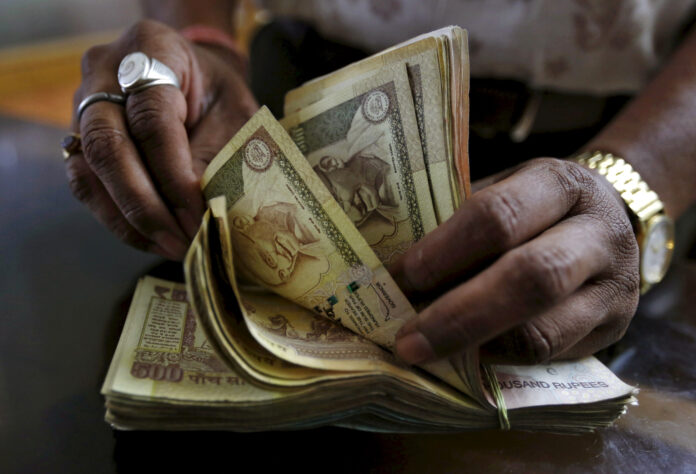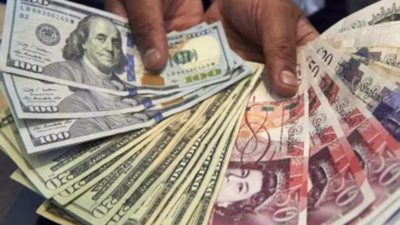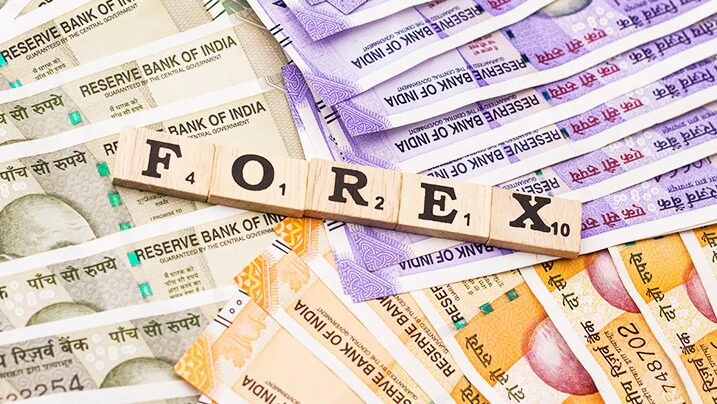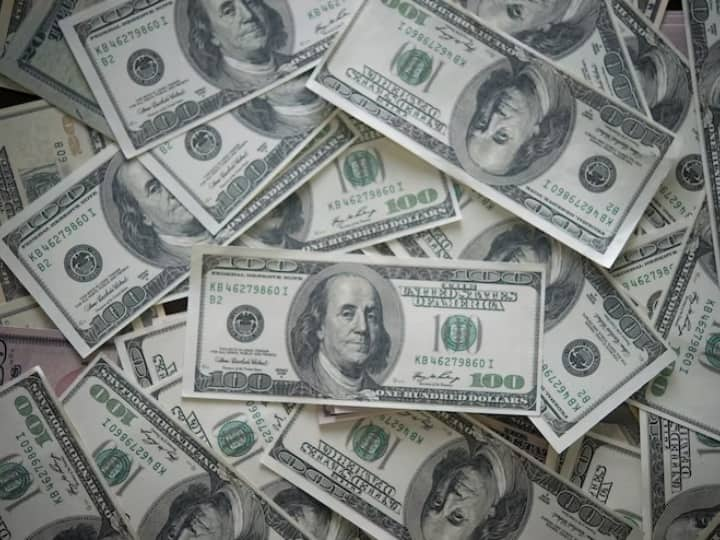
India’s foreign exchange reserves decline to lowest level in nearly 3 months, trade deficit narrows to $20.13 billion
India’s foreign exchange reserves declined to 49.75 lakh crore in July, while bond yields fell to their lowest level in a month. The goods trade deficit also decreased, but inflation and geopolitical tensions continue to pose risks.

In July, India’s foreign exchange reserves experienced a decline, reaching 49.75 lakh crore (or 49.75 trillion) INR. Concurrently, bond yields in the country decreased to their lowest level in a month, indicating a possible easing of borrowing costs. The goods trade deficit also saw a reduction during this period, which could indicate improvements in the balance of trade.
However, despite these positive developments, there are still certain risks and challenges that need to be addressed. Inflation remains a concern, as rising prices can impact the cost of living for citizens and put pressure on the economy. Additionally, geopolitical tensions can create uncertainties in the global economic landscape, affecting India’s trade and investment climate.
Overall, the economic indicators in July showed mixed trends, with some positive signs like a decrease in the trade deficit and bond yields, but also potential risks like inflation and geopolitical tensions that require careful monitoring and management by policymakers to ensure stable and sustainable economic growth.

In the week ending July 21st, 2023, India’s foreign exchange reserves declined to 49,75,431 crores INR, showing a decrease from the previous level of nearly 50,04,017 crores INR. This decline indicates a reduction in the country’s foreign currency assets and other reserve holdings during that specific week. The fluctuations in foreign exchange reserves are influenced by various factors such as import and export dynamics, capital flows, and foreign investment patterns. It is important for policymakers to closely monitor these reserves to ensure the stability and resilience of the country’s financial system and its ability to manage external economic challenges effectively.

In July, the yield on India’s 10-year government bond experienced a decline, reaching approximately 7.05%. This marked the lowest level in a month for the bond yield. The decrease in bond yield was part of a broader global trend of falling yields in government bonds. One of the factors influencing this trend was the indication of decelerating inflation and growth in the United States. These developments tempered the previously held hawkish outlook for the Federal Reserve, leading to expectations of a more accommodative monetary policy. As bond yields move inversely to bond prices, a decline in yields indicates increased demand for government bonds, possibly reflecting investor sentiment towards safe-haven assets and expectations of a more dovish monetary policy stance in the future.

Despite challenging external conditions, domestic economic indicators in India showed a degree of resilience, which led to increased investments in Indian bonds. The latest data indicated that there were net purchases of $1.1 billion in Indian bonds in June. However, the lingering risk of inflationary pressures raised speculations that the Reserve Bank of India (RBI) would hold off on cutting interest rates in the near future.
During June, India faced unfavorable weather conditions in Southeast Asia, and concerns about the El Nino phenomenon added to the rise in food inflation. This significant increase in food inflation had a notable impact on the Indian consumer basket, potentially affecting household budgets and overall economic sentiment.
While the Indian economy demonstrated strength in certain areas, such as attracting investments in bonds, it also faced challenges related to inflation and external factors like weather conditions and global economic conditions. These complexities may influence the RBI’s policy decisions and overall economic outlook in the coming months.

The Indian rupee experienced a rapid strengthening, reaching a seven-week high of 82.75 per USD on July 6th. This surge in the rupee’s value was driven by rising inflationary risks, which bolstered the case for the Reserve Bank of India (RBI) to hold off on reducing interest rates.
In June, retail inflation in India rose to 4.8%, up from the previous month’s two-year low of 4.3%. This increase in inflation exceeded market expectations, which had anticipated a rate of 4.5%. The surge in inflation was primarily driven by a sharp rise in food costs.
The higher inflationary pressure poses challenges for the RBI in terms of managing monetary policy. Inflationary concerns may prompt the RBI to adopt a cautious approach and refrain from cutting interest rates in the near future. Interest rate decisions play a crucial role in influencing economic growth, inflation levels, and exchange rates, so the RBI carefully assesses various economic indicators before making any policy changes.
The strengthening of the Indian rupee indicates market sentiment towards the currency amid changing economic conditions and expectations for monetary policy decisions. As the global and domestic economic landscape evolves, the rupee’s value may continue to fluctuate, reflecting the interplay of various factors such as inflation trends, interest rate outlook, and overall market sentiment.
The events of rising inflation in India were in line with the Reserve Bank of India’s (RBI) concerns about adverse weather conditions and geopolitical tensions that could potentially impact food prices, a critical component of the Indian consumer basket. These factors have contributed to the recent surge in inflation, prompting the RBI to be cautious about cutting interest rates in order to manage price stability and overall economic growth.
Amidst these economic considerations, the Indian rupee has been bolstered by substantial foreign capital inflows. International investors showed confidence in the Indian economy, as recent data revealed that they purchased $6.7 billion worth of Indian stocks in June. Such foreign investment can have a positive impact on the Indian currency, strengthening it against foreign currencies like the USD.
Foreign capital inflows are crucial for India’s economic stability and growth. They help bolster the country’s foreign exchange reserves, which are essential for supporting imports, maintaining liquidity in the financial system, and mitigating external vulnerabilities. Additionally, strong foreign investment can contribute to economic development by providing access to capital and fostering growth in various sectors.
Overall, the combination of rising inflationary pressures, foreign capital inflows, and the RBI’s cautious approach to monetary policy has shaped the recent performance of the Indian rupee. As the economic landscape continues to evolve, the rupee’s value may continue to be influenced by both domestic and international factors, making it a closely monitored currency in the global financial markets.
